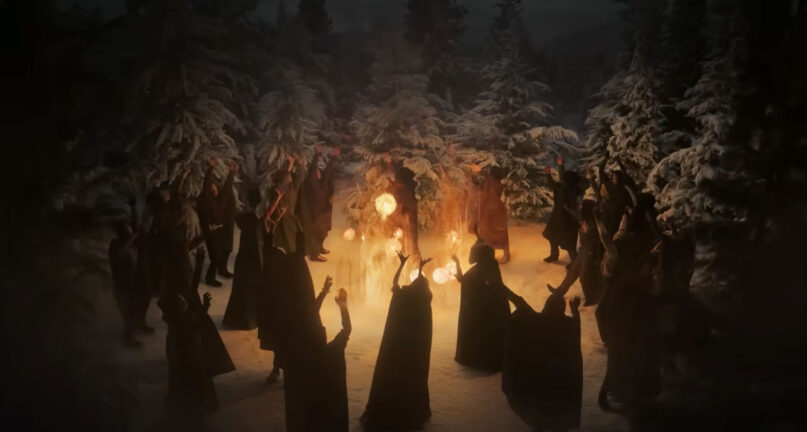(RNS) — Any phenomenon as big as Taylor Swift’s Eras Tour, which has deluged cities along its path with crowds of devoted teenage “Swifties,” is likely to stir concerns about spiriting away the nation’s youth.
Then again, Swift has primed the fears with her performance of “Willow,” a song that drew backlash in 2020 when its video depicted cloaked figures dancing in the woods. Swift fueled the controversy at the time, saying that the song “sounds like casting a spell to make someone fall in love with you.”
“People are losing their souls and can’t even see it,” commented a YouTube user in March after a video appeared online showing similar choreography in a Swift concert.
The reaction is an increasingly common one in social media, where anti-witchcraft and other anti-occult videos have sprung up, often with pastors calling for witch burnings or drownings.
In February 2022, a video of Tennessee pastor Greg Locke threatening to expose six alleged witches in his own congregation went viral. In December, in an internet forum for body builders, someone called for the return of “witch burnings” in order to “instill order to this hellscape.” The thread was titled, “The kardashians are modern a witch coven.”
Offline, a pastor invited to give the invocation in the Ohio House of Representatives late last year told legislators they were in a battle against witches, who he called “the rulers of darkness.”
The trend has disturbed those in the modern witchcraft community who consider themselves at risk of reprisal.
“I don’t take this as a joke,” said Juliet Diaz, author of “The Altar Within” and other books on witchcraft. “I take this as a threat.”
Indeed, New York’s WitchsFest has seen an uptick in harassment in recent years, and earlier this year the Satanic Temple’s SatanCon in Boston — a sold-out event celebrating the organization’s 10-year anniversary — attracted protesters from the Patriot Front, a white nationalist group, as well as from local Christian groups.
A 2021 Brookings Institution report connected social media comments with real-world violence, saying that aggressive language “magnifies extremism,” “increases fear” and anger and “gives violence direction.” It emboldens “individuals to express, and act on, pre-existing views they had once hidden,” according to the report.
That same year, the United Nations Human Rights Council adopted a resolution urging member nations to take immediate action against witchcraft-related violence that often includes “killings, mutilation, burning, … torture, and other cruel, inhuman or degrading treatment and stigmatization.”
Diaz comes from a long line of brujas (witches) and curanderos (healers) from Cuba, where magical practitioners have been routinely persecuted and often hide their spiritual and magical practices behind mainstream religions.
Though she is normally open about her own practice to help “dismantle the false narrative around the witch,” Diaz recently removed a witch-related bumper sticker from her car out of concerns for her safety.
Kristin Harris, a witch and historian of Colonial America, labeled current anti-witchcraft rhetoric “dog whistles” to hide discrimination on other grounds. The “imagery of the witch,” Harris said, has been used for centuries to scapegoat marginalized people.
Harris points out that the victims of the most famous witch trials in U.S. history, in Salem, Massachusetts, Harris’ hometown, never practiced actual magic. In May, legislators in Connecticut, which killed 34 colonists accused of witchcraft beginning decades before the Salem trials, recently declared its victims “innocent of such charges.” The resolution goes on to blame “community strife and panic” as well as “overwhelming fear and superstition.”
Harris sees echoes of the 17th century moral panics in today’s climate of fear of witches. “It is getting weird,” she said of the social media attacks.
One modern-day example is calling preparations for June’s Pride celebrations of the LGBTQ community “satanic.”
While Diaz views the fearmongering and scapegoating as tools used by those in power, she said the only solution is to continue to speak out. “I have the voices of my ancestors alive within me,” she said. “We need to make noise.”





